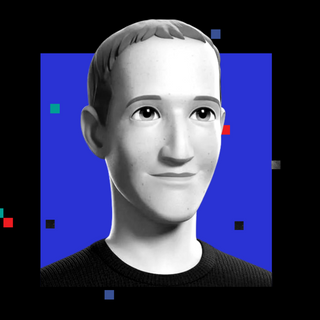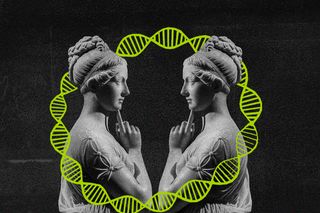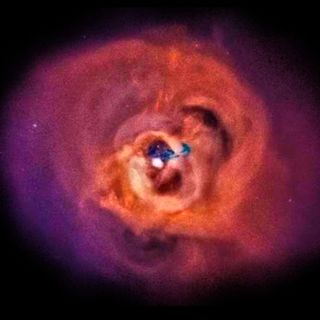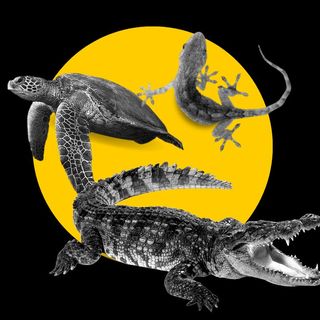
Doppelgangers May Share Common DNA Despite Being Unrelated to Each Other
Researchers hope the study’s findings will help diagnose illnesses in future since people with similar genes may contract similar diseases.

The concept of doppelgangers has gripped our imagination for a long time. Naturally, then, the internet hosts one too many memes about the facial similarities between Margot Robbie and Emma Mackey, alongside Katy Perry and Zooey Deschanel. Perhaps, the mystery behind two people — unrelated to each other, and separated by continents even — looking like mirror images of each other, is what continues to fascinate us. Since only seeing is believing, we’re yet to verify whether everyone does indeed have six doppelgangers, as a popular theory — often referenced in 2006’s Jaan-E-Mann — suggests. But in the meantime, scientists may have solved the mainstay of the mystery surrounding doppelgangers: how can two completely unrelated individuals look alike? The answer lies in their DNA.
Anew study published this week in the journal Cell Reports claims that unrelated look-alikes may share more than just facial features with each other. The study used facial recognition algorithms, genetic testing, and questionnaires on daily life and behavior, to identify similarities between 32 pairs of look-alikes.
This is the first time that scientists looked at connections between unrelated lookalikes. The researchers sourced their participants from the database of an ongoing photo series by photographer Francois Brunelle — who himself looks very similar to British comedian Rowan Atkinson — titled “I’m Not a Look-Alike!” Brunelle’s project, which began in 1999, documents people who are not twins but look strikingly similar to each other.
The study authors reached out to participants from the project for their research. The pairs of participants in the study do not share any immediate relatives between them, and some also live in different countries.
The researchers ran the facial profiles of the participants through three different facial recognition algorithms. All the algorithms recognized the same 16 pairs from this set as “identical twins.” Then, the scientists performed a DNA evaluation of the participants’ oral swabs — following which, they asked the volunteers to fill out questionnaires on their lifestyles and behaviors. They observed that those recognized as twins by the algorithm also shared many similarities in their DNA.
The participants’ responses to the questionnaires suggested that doppelgangers also shared certain lifestyle traits such as smoking habits. The researchers further observed that there was some association between a pair of look-alikes sharing similar DNA and their height, weight, and education levels.
Related on The Swaddle:
The Culture Ministry Conducted a DNA Study of Tribal Populations. What Are the Implications?
However, the study also highlighted that people differed from their doppelgangers in some aspects of their genetic make-up. For instance, doppelgangers’ epigenomes — or the chemical changes made to the DNA that direct it what to do, where to do them, and when to do them — varied a great deal from their lookalikes. There were differences among doppelgangers’ microbiome — the community of microorganisms that inhabit human bodies — too.
Individual environmental factors such as nutrition and exercise determine a person’s microbiome much more than their DNA. Thus, the fact that sharing similar DNA didn’t impact it wasn’t surprising, given that the doppelgangers had been brought up separately — perhaps, even miles away from each other.
The researchers highlight that one potential use of the study’s findings could be in predicting diseases among people based on their DNA profile juxtaposed against a database of DNA-based medical history of patients. Reporting on the findings of the study, The New York Times mentions that co-authorDr. Manuel Esteller, a molecular geneticist at the University of Barcelona, is “hopeful that the study’s findings will help doctors diagnose illness in the future — if people have similar enough genes to look alike, they might share predilections for diseases too.”
The scientists also mention that their findings can form a framework for looking at the links between facial features, DNA profiles, and behavioral patterns — potentially aiding forensic science.
However, some researchers have cautioned that such an approach could raise ethical concerns and potentially do more harm than good. The use of facial recognition as a surveillance tool is already heavily criticized as these technologies are violative of the privacy of individuals and may also breach consent while collecting personal information of people. In the west, anti-racism activists have also pointed out how these technologies extend existing racial biases in policing practices as it is overwhelmingly used to surveil areas where minority and immigrant populations are higher.
Given its potential for misuse thus, it’s pertinent that policymakers consider all possible repercussions before leaping into employing the findings of this study in forensic science.
Ethical conundrums aside, the study does hold merit through its novel exploration of genetic connections between look-alikes. It is possibly the first time that we have an explanation for unrelated individuals looking alike. As Dr. Estellar told The New York Times, the fact that doppelgangers share similar DNA “would seem like common sense, but never had been shown.”
Amlan Sarkar is a staff writer at TheSwaddle. He writes about the intersection between pop culture and politics. You can reach him on Instagram @amlansarkr.
Related


Nasa Recorded ‘Cosmic Horror’‑like Sound From a Black Hole
